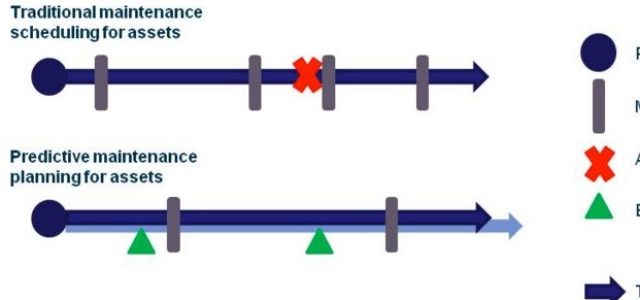Technology has long served as a civilizing and freeing influence. It helped us improve standards of living, increase the velocity of money, build new things, take part in the social contract and, ultimately, organize our resources and talents.
But are we approaching the point of diminishing returns? In other words, does technology still represent the means with which we can civilize and improve ourselves, or is it becoming a prison? The phrase “techno-dystopia” exists for a reason, but until recently it only lived within the pages of speculative fiction.
The way we use technology in the workplace today reveals astonishing potential — either for continued improvement in our collective well-being or for incredible oppression. Companies everywhere are, as we speak, pushing the boundaries for what’s possible — and permissible — when we lean on technology to boost our productivity. Let’s take a look at the opportunities and the pitfalls of technology in the workplace.
What Are ‘People Analytics’?
There’s no question that “big data” holds some of the keys to humanity’s future. We now generate 2.5 quintillion bytes of data per day. But what are we measuring, exactly?
“People analytics” is a data type that’s finding a home in more and more workplaces across the world. In the simplest terms, people analytics is the marriage of human resources and the accumulation of data. These data points may include any of the following:
- How frequently employees interact with one another
- The tone of an employee’s voice
- Time spent “idle” or “on task”
- Body language
- Movement throughout a facility
- Facial expressions
In some cases, companies may even record employee conversations. It’s a two-way street, naturally — employees have the means to covertly record their managers for oversight and litigation purposes, and vice versa. And as of 2018, most U.S. territories permit this type of surveillance, for better and worse. There are times and places for collecting “interaction data” of this nature, most of which have to do with proving negligence, harassment or the abuse of trust.
But “people analytics” as practised by Google, General Motors, Procter & Gamble, Hewlett-Packard, and even Little Debbie — all of which now have dedicated analytics teams on their HR payroll — feels just a little bit more potentially sinister.
Which Workplace Technologies Are Raising Eyebrows?
Retail giant Amazon.com owns two patents for employee-tracking wristbands. This is a slightly tone-deaf time to pursue such “innovations,” especially when the company already has a pile of bad press on its plate. Employee “mental breakdowns” at Amazon facilities are already a regular enough occurrence that 911 dispatchers have received scores of calls from overwhelmed employees over the last few years. Other accounts indicate warehouse employees regularly skip bathroom breaks to maintain their relentless pace.
Amazon’s recent patents describe wearable devices which would, in theory, help reduce errors as floor workers navigate product racking. A light tap on the wrist would tell a floor worker whether they’re reaching for the right bin, for instance. But critics have been quick to point out that such technology represents a potential breach of employee privacy and sovereignty. Whether or not Amazon ends up manufacturing and distributing these wearables, it’s clear the doors are opening for an entirely new level of surveillance in the workplace.
Said one Amazon warehouse employee: “After a year working on the floor, I felt like I had become a version of the robots I was working with.” And this was even before employee-tracking wristbands had become a mainstream news item. We can reasonably expect that the pursuit of technologies like these will make these feelings worse — not better — and dehumanize, rather than democratize, the modern workplace.
Does ‘Productivity’ Technology in the Workplace Even ‘Work’?
Michael Childers, representing the School for Workers — a labor education program focused on “democracy in the workplace” — has some choice words for companies pursuing employee surveillance and tracking technology, and the research background to back it up:
“In general, people experience more stress when they feel that someone is looking over their shoulder, real or virtual … “there is a large body of research documenting that stressful workplaces can potentially lead to many problems that reduce company profits, including increased turnover, more sick days used, higher workplace compensation costs, and ironically, even lower productivity.”
This shouldn’t come as a surprise. You won’t find many employees who relish being micromanaged. And what is “people analytics” but a way to outsource micromanagement to machines? Today, it’s a tap on the wrist when you reach for the wrong bin. Tomorrow, you get your pay docked automatically because you spent too long in the employee washroom.
What Childers’ research suggests is that this family of technologies doesn’t even achieve what it sets out to accomplish, which is the improvement of productivity, the pursuit of constant growth and the accumulation of profits. If we’ve been watching for diminishing returns in productivity technology, we’re surely on the verge of reaching that point.
The United States is a hodgepodge of worker laws that often change enough that business leaders require constant reeducation on the subject. The accumulation of employee data only complicates the matter, and on two fronts:
- In workplaces with contract-based employment, employees may be fired for any reason at any time.
- Employees may be legally permitted to share details about your performance and dismissal with future employers. That means your accumulated data profile — your “rate of production,” your average number of bathroom breaks, your interactions with employees, your idle time, and a number of other metrics that may, or may not, actually speak to your “desirability” as human capital, may accompany you as you navigate the job market the way pedigree documents accompany livestock and show dogs.
China has, perhaps rightly, caught some flak for its “social credit system,” which provides a number of tools with which to classify and rank citizens. The average workplace has a ways to go before it ventures into authoritarian territory, but it’s a future we can see with increasing clarity from where we’re presently standing.
Is There an Upside to This Technology?
Steelcase, Cubist Pharmaceuticals and Bank of America are actively experimenting with technology that detects and draws conclusions from employees’ facial expressions. Some of this data might serve an instructive purpose in customer-facing roles and industries. Still — if, as Michael Childers suggests, surveillance technology compromises rather than improves employee productivity, then the advent of face- and mood-detecting technology will erode, rather than improve, the quality and genuineness of something far more precious than productivity: everyday human interactions.
So is there a pro-social application for all of this technology, or is the workplace simply destined to become a panopticon which rewards the high performers and shucks off the lesser ones the way we dispose of interchangeable parts?
Perhaps. Companies have been implanting microchips in their employees for years as a way to protect security access. But this technology, too, even more than the others, feels like a double-edged sword: useful for a small handful of applications, but with a vast and frightening amount of potential for misuse.
Another application for workplace “people analytics,” spearheaded by a startup called Knack, seeks to evaluate “human potential” and “aptitude” by having human workers play computer games. It’s another potentially interesting idea — but it feels more limiting than freeing. It’s a series of digital pigeonholes that we may all soon fall into, whether we like it or not. “Games” like this don’t measure the intrinsic worth of a human being — they measure how profitable that person is to an employer.
On the other hand, is anybody under the impression that hiring decision-makers in small business and big industry are 100 per cent impartial, 100 per cent of the time? Hiring and firing decisions may be made on the basis of any number of criteria, many of which are decidedly superficial.
Applying gamification, machine learning and real-time data-gathering to the challenge of assessing a worker’s potential, or their real-world performance, is a fraught concept. If there’s a warning here, it’s to remember that human beings are more than the sum of our parts — and we’re definitely more than the sum of our productivity data.
Article by channel:
Everything you need to know about Digital Transformation
The best articles, news and events direct to your inbox
Read more articles tagged: Featured, Future of Work, People Analytics







